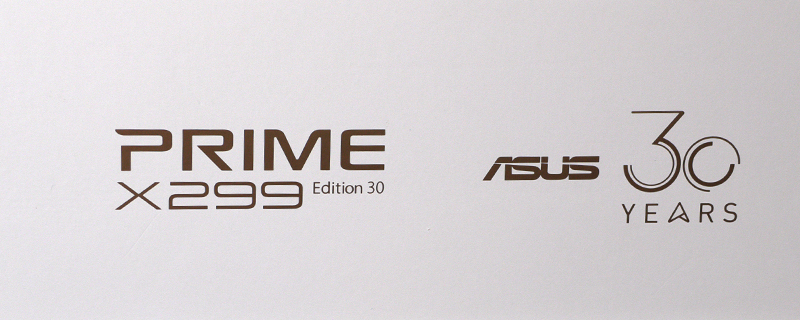ASUS Prime X299 Edition 30 Review
Conclusion
Summing up the Prime X299 Edition 30 is a bit of a mixed bag. Maybe we were expecting too much from a model designed to celebrate ASUS longevity in the world of motherboard design, or maybe the fact the only other two X299 motherboards that are designed for the 10th Generation Intel CPUs we’ve reviewed were both absolute monsters, but initially we weren’t hugely impressed.
The box is certainly lovely, and if you go purely upon first impressions the Prime does an excellent job. The packaging looks like other with a ultra-minimalist aesthetic that stands apart from anything on the market. Maybe being a 30th anniversary edition it would have been cool to see ASUS go with an early 90s aesthetic, but this is very much a design that looks to the future rather than the past. Taking the Prime Edition 30 out it’s immediately familiar with the white looks that are such a key component of the Prime range and what differentiate it from the current aesthetic considerations of modern motherboards with their ‘all black RGB’ ethos.
The feature set is definitely in keeping with current trends. Wherever you look the Prime Edition 30 is replete with high bandwidth touches, whether it’s the inclusion of USB 3.2 Gen 2 connectors both front and onboard, or Thunderbolt 3 in both Type-C and DisplayPort styles, the Prime will transfer data at a serious clip. Equally in the data transferal stakes the Aquantia 5G LAN sits alongside a Gigabit LAN and the Intel Wi-Fi 6 AX200 to push data across your network and indeed the globe at ever faster speeds. Getting that data to the ports quickly is vital to maximise their throughput and there are plenty of M.2 NVMe connections to let you do that.
Stock performance was, as we said in our opening paragraph, something which didn’t set our hair on fire at first. It’s a key lesson in why you can’t make a judgement based upon your memory of the type of scores we obtain, but instead can only get a feel for how something is doing when you put that data into our graphs. Whilst it still doesn’t smoke the competition it’s actually a lot closer than we felt it was, which is something true of nearly all modern motherboards. The days when there was a massive performance gap between the best and the worst are long behind us and nearly all platforms are tremendously consistent as so much of the control is built into the chipset, rather than relying upon additional chips on the PCB. Nonetheless the Prime Edition 30 is a motherboard which really needs to be overclocked to extract the maximum from it. It’s perhaps a little too conservative at stock. Overclocked though it hits the same heights as the other X299 motherboards we’ve reviewed with 4.7 GHz pushed across the 18 cores of our test Core i9-10980XE and the results back this up, being buried deep amongst the other results we’ve seen. The memory bandwidth in particular was a real highlight.
With the all white aesthetic married to the excellent overclocked performance, particularly in 3D tests, the ASUS Prime X299 Edition 30 is a great choice if you’ve either grown weary of the black PCBs that have flooded the market, or just want to step outside the norm and go for a motherboard which needs a bit of playing around with to make the most of it and wins our OC3D Gamers Choice.
Discuss the ASUS Prime X299 Edition 30 in our OC3D Forums.




